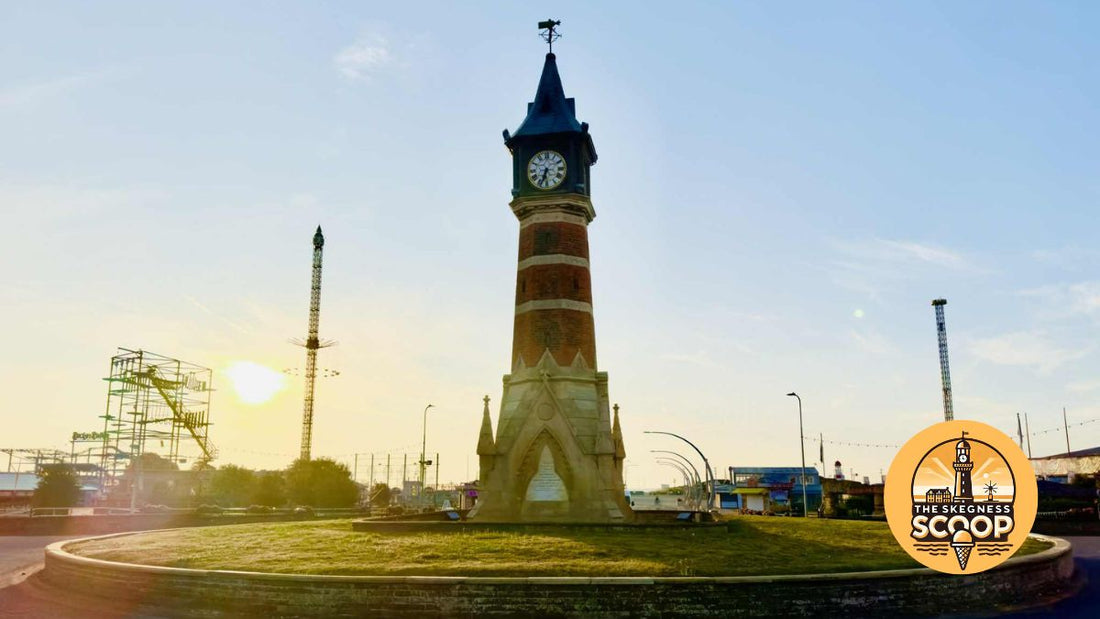
Where’s Skegness? A Full Visitor’s Guide to Skegness, Lincolnshire
Share

When people ask, “Where’s Skegness?”, they often imagine a quaint British seaside town. But Skegness is more than just a name — it’s a lively coastal resort in the county of Lincolnshire with a long history, sandy beaches, and a host of visitor attractions. Whether you plan to visit for a few hours or spend a full holiday, this guide will tell you everything: where Skegness is, how to get there, what to do along the Skegness coast, and tips to make the most of your trip.
Where’s Skegness? — geography & location
Skegness, Lincolnshire — county & context
Skegness is a seaside town and civil parish in the East Lindsey district of the ceremonial county of Lincolnshire. It lies on the Lincolnshire coast, facing the North Sea.
In terms of more local geography, Skegness sits about 43 miles east of the city of Lincoln, and approximately 22 miles north-east of Boston. It is the largest settlement in East Lindsey by population (just over 21,000 in 2021) and forms a continuous built-up area with Ingoldmells and Chapel St Leonards to the north.
Because Skegness sits right on the Skegness coast (part of the Lincolnshire coast), its identity is tightly linked to seaside tourism and the natural shoreline.
A bit of history: how Skegness became seaside resort
From port to resort
The original location of Skegness was further east, at the mouth of The Wash. It was a haven or promontory known by a name derived from Norse (Skeggi’s “ness” = headland) — hence the name “Skegness.”.
Over time, erosion and a severe storm in the 1500s washed away the original harbour and medieval settlement. By the 16th century, the old site had largely been lost to the sea, and the town was re-established further inland along the new shoreline.
Through the 18th and early 19th centuries, the area was still modest — fishing, farming, and small trade were dominant. But in the late 19th century, things changed. The opening of the railway line to Skegness (in 1873) triggered a seaside boom. The Earl of Scarbrough, who owned much of the land, laid out grids of streets, promenades, gardens and plots to lease for development — the foundations of the resort town.
By the early 20th century, Skegness had become known as a classic British holiday destination — complete with amusement arcades, piers, promenades, and the iconic “Jolly Fisherman” poster.
Modern developments and renewal
Over the decades, Skegness has continued to evolve. Traditionally seasonal and tied to tourism, the town has faced challenges associated with economic dependence on leisure, low incomes in service sectors, and seasonal variability.
In recent years, investment and redevelopment projects (for example the “Go Skegness” initiative) aim to improve transport links, reduce congestion, and enhance walking and cycling routes, especially along the coast and between the town and nearby reserves. Also, regeneration funding across the East Lindsey coast has sought to revitalise public realm, promenades, and visitor facilities.
Why visit Skegness? Attractions on the Skegness coast
If you’re planning to visit Skegness, you’ll find more than just sun and sand. Here are the top things to see and do — many of which showcase the Skegness coast and nearby natural areas.
The beach & promenade
Skegness Beach features long stretches of golden sand, ideal for traditional seaside fun — paddling, sunbathing, sandcastle building. The seafront promenade is lively, with arcades, cafés, fish & chip shops, candyfloss stalls and more. The beach holds a Blue Flag award, a mark of high environmental and water quality standards.
Skegness Pier
Skegness Pier, originally opened in 1881, was once one of the longer piers in England (about 562 m). Today, the remaining structure is around 118 m long, used for pedestrian walks, entertainment, arcade amusements, and events. The pier has undergone renovations and partial reconstruction over the years to maintain and enhance visitor access and safety.
Natureland Seal Sanctuary & Skegness Aquarium
A family favourite, Natureland Seal Sanctuary lets visitors observe rescued seals, feed younger animals, and explore other wildlife exhibits (butterflies, reptiles, small mammals). Nearby is the Skegness Aquarium, with immersive underwater tunnels, interactive exhibits, and a variety of marine species including rays, octopuses and more.
Gibraltar Point Nature Reserve
Just south of Skegness along the Skegness coast, Gibraltar Point is a protected nature reserve with sand dunes, salt marshes, reedbeds and open coastline. Walking trails and birdwatching hide opportunities are a draw for nature lovers.
Heritage & amusement
-
Lincolnshire Coast Light Railway: A narrow gauge heritage railway running near Skegness (Ingoldmells) that offers short rides through scenic surroundings.
-
Fantasy Island & other amusement parks: Just north in Ingoldmells, with rides, thrillers, and family fun close to the Skegness resort area.
-
Skegness Stadium: For motor and stock car racing, special events, stunt shows and more.
-
Skegness Town Hall & architecture: The neo-Georgian Town Hall is a local landmark, formerly a convalescent home, now Grade II listed.
Events, festivals & local culture
Skegness hosts annual carnivals, arts festivals, summer programs and entertainment nights. The pier and theatre venues often host live shows, music nights, and seasonal events (holiday fireworks, beach parades, etc.).
How to Visit Skegness — travel, access & tips
Getting here by car
From Lincoln or points west, take the A158 eastwards. From Boston, use the A52. Skegness is road-connected via these routes. Note: seasonal traffic is heavy in summer months, so arriving early or late in the day helps.
Train & public transport
If you are looking to get the train to Skegness, Skegness railway station is on the Nottingham → Skegness line (via Grantham). There is a local bus service called Skegness Seasiders that circulates between key attractions and stops every ~10 minutes during peak times.
Walking, cycling & local mobility
As part of the Go Skegness project, improvements are underway to footpaths, cycleways, and public transport to make access along the coast and between town and natural sites easier and more sustainable. If you enjoy walking, many attractions (pier, beachfront, reserves) are reachable on foot from central Skegness.
Best times to visit & seasonal tips
-
Summer (June–August) sees the highest visitor numbers, with full activity but also crowds.
-
Shoulder seasons (late spring, early autumn) often give a balance between milder weather and fewer people.
-
Some venues (heritage railways, amusements) run reduced hours off-peak; always check ahead.
-
Weather can change quickly on the Lincolnshire coast — layers, waterproofs and wind protection are wise.
-
Book accommodation in advance during school holidays.
-
Always check tide times if you plan beach walks or exploring mud flats — the coastline can be dynamic.
What to expect — atmosphere, pros & caveats
The seaside resort vibe
Skegness is quintessentially a traditional British seaside resort. Visitors expect arcade games, seaside cafés, donkey rides, fish & chips, amusements — in short, nostalgia, fun, and informality. Locals and repeat visitors often enjoy the relaxed pace, the friendliness, the varied attractions, and the ease of combining nature and entertainment.
Challenges & criticism
Like many older resort towns, Skegness contends with the seasonal economy, aging infrastructure, and perceptions of being “tired” during off-peak periods. Some surveys (e.g. Which?) have rated it among less scenic or quieter destinations, especially relative to more remote coastal towns. That said, defenders point to ongoing investment and improvements.
Weather, of course, is unpredictable on the coast. Also, some parts of the seafront and piers have been subject to repairs or partial closures in past years. But overall, many visitors appreciate the “grand old-school” charm and affordability compared to more crowded or glam seaside resorts.
Sample itineraries & route ideas
One-day trip (coast & nature)
-
Morning: Arrive, walk the promenade, maybe visit the pier, take in the sea breeze.
-
Midday: Lunch at a seafront café, explore arcades, amusements.
-
Afternoon: Visit Natureland Seal Sanctuary, Skegness Aquarium.
-
Late afternoon: Drive or walk south to Gibraltar Point reserve for a nature trail and sunset.
-
Evening: Return to town for dinner, evening entertainment or theatre show.
Two- to three-day stay (plus hinterland)
-
Day 1: As above, for the seafront and coastal attractions.
-
Day 2: Incorporate nearby Heritage railway (Lincolnshire Coast Light Railway), Fantasy Island, or excursions into Lincolnshire countryside (visit Lincoln city, the Wolds).
-
Day 3: Time for slower walking along quieter beaches north of Skegness (e.g. Chapel St Leonards, Anderby Creek), or local festivals, markets, or even a coastal cycle ride under improvement works via Go Skegness.
Tips & FAQs
“Where’s Skegness” — summary
Skegness is on the Lincolnshire coast, in Lincolnshire county, in eastern England.
Is Skegness part of a county called “Skegness county”?
No — Skegness county is not a real administrative unit. The correct county is Lincolnshire.
Can you walk the entire coastline around Skegness?
While sections are walkable (especially the promenade and into Gibraltar Point), the broader Lincolnshire coast includes marshes, protected wetlands, and floodbanks. Some stretches are less accessible.
What about accommodation & staying options?
Skegness has a wide range of lodging: seafront hotels, guesthouses, B&Bs, holiday parks (including the famous Butlin’s Skegness), caravan and camping sites.
Is Skegness safe for families / children?
Yes — much of the core visitor area, promenade, attractions, and reserves are family-friendly. Use caution near water and follow warnings. In peak season, crowds can be heavy — keep an eye on children.
Best way to get around once in town?
Walking is good in the central zone. The Skegness Seasiders bus helps link attractions. Cycling is increasingly viable (especially with routes being improved under Go Skegness).
Looking beyond Skegness — the wider Lincolnshire coast & region
Skegness isn’t alone — the Lincolnshire coast stretches for over 50 miles from the Humber estuary in the north, past Grimsby and Cleethorpes, down to the Wash and Norfolk border. Other coastal towns include Mablethorpe, Sutton-on-Sea, Ingoldmells, Chapel St Leonards, and smaller locales like Trusthorpe and Anderby Creek.
Because of its positioning, Skegness serves as a hub for visitors exploring the Lincolnshire coast and nearby countryside (Lincolnshire Wolds, fenland, rural villages). Some choose to split time between the resort and more tranquil stretches to the north or south.
Final thoughts & planning your trip
-
If someone asks you: “Where’s Skegness?”, the concise answer: on the Lincolnshire coast in eastern England, in the county of Lincolnshire.
-
Skegness offers a mix of quintessential seaside attractions (pier, sand, amusements) and natural escapes (Gibraltar Point, reserves).
-
Use public transport, walk, or cycle to avoid summer traffic.
-
Check opening times and book ahead in busy season.
-
Explore beyond the town — the broader Lincolnshire coast has peaceful beaches and hidden gems.
Whether your aim is a one-day day trip or a longer holiday by the sea, Skegness remains a classic and accessible choice for families, nature lovers, and nostalgic seaside seekers. I hope this guide helps you answer “Where’s Skegness?” with confidence — and plan a visit you’ll remember.



